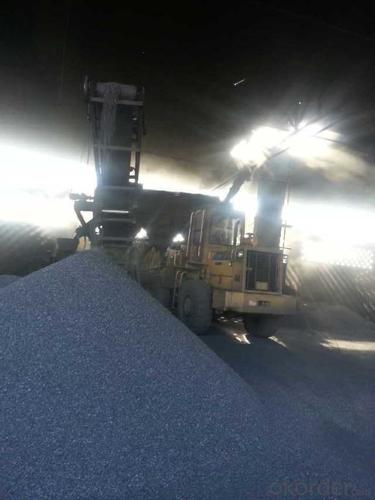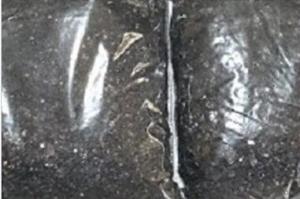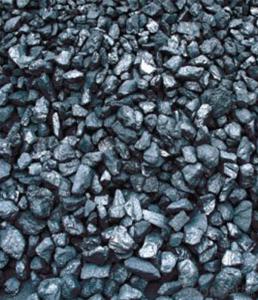FC 93% Calcined Anthracite
- Loading Port:
- China Main Port
- Payment Terms:
- TT or LC
- Min Order Qty:
- 20 m.t.
- Supply Capability:
- 1000 m.t./month
OKorder Service Pledge
OKorder Financial Service
You Might Also Like
FC 93% Calcined Anthracite
It used the high quality anthracite as raw materials through high temperature calcined at over 2000 by the DC electric calciner with results in eliminating the moisture and volatile matter from anthracite efficiently, improving the density and the electric conductivity and strengthening the mechanical strength and anti-oxidation.
It has good characteristics with low ash, low resistvity, low sulphur, high carbon and high density. It is the best material for high quality carbon products.
Product Uses
Calcined Anthracite Coal may substitute massively refinery coke or graphite. Meanwhile its cost is much less than the refinery coke and graphite. Carbon Additive is mainly used in electric steel ovens, water filtering, rust removal in shipbuilding and production of carbon material.
Calcined Anthracite
Fixed carbon: 90%-95%
S: 0.5% max
Size: 0-3. 3-5.3-15 or as request
General Specification of Calcined Anthracite:
PARAMETER UNIT GUARANTEE VALUE | |||||
F.C.% | 95MIN | 94MIN | 93MIN | 92MIN | 90MIN |
ASH % | 4MAX | 5MAX | 6MAX | 7MAX | 8MAX |
V.M.% | 1 MAX | 1MAX | 1.5MAX | 1.5MAX | 1.5MAX |
SULFUR % | 0.5MAX | 0.5MAX | 0.5MAX | 0.5MAX | 0.5MAX |
MOISTURE % | 0.5MAX | 0.5MAX | 0.5MAX | 0.5MAX | 0.5MAX |
Size can be adjusted based on buyer's request.
Pictures of Calcined Anthracite:

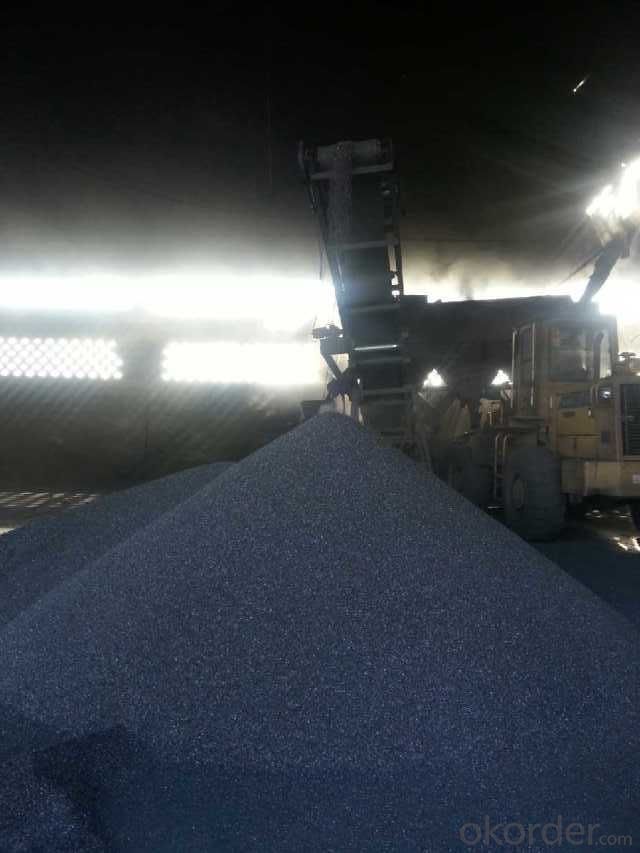
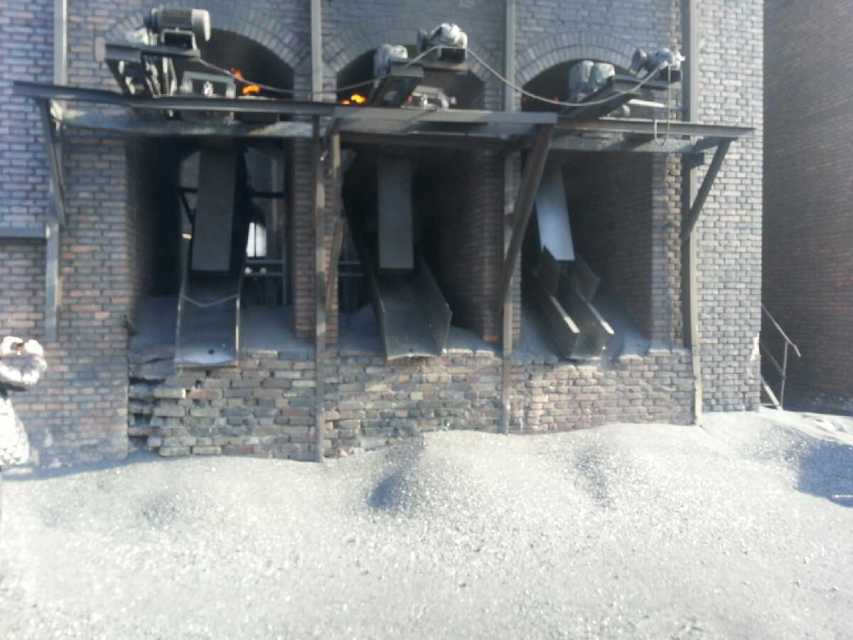
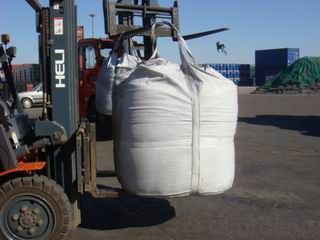
We can supply below furnace charges, please feel free to contact us if you areinterested in any of any of them:Coke (Metallurgical, foundry, gas)
Calcined Anthracite with fixed carbon from 90% to 95%
- Q: What are the effects of carbon emissions on the stability of volcanic regions?
- The stability of volcanic regions can be influenced by both direct and indirect effects of carbon emissions. At first glance, the direct impact of carbon emissions on volcanic areas seems relatively insignificant. Volcanic eruptions naturally release carbon dioxide (CO2), so the additional emissions from human activities may not have a significant individual effect on the stability of volcanic regions. However, the increased levels of carbon dioxide in the atmosphere can contribute to climate change, which can indirectly affect volcanic activity. Indirectly, the stability of volcanic regions can be affected by climate change resulting from carbon emissions. The rising global temperatures caused by climate change can lead to the melting of glaciers and ice caps. This, in turn, increases the amount of water on the Earth's surface. The additional weight of water in volcanic areas can potentially add pressure to magma chambers and trigger volcanic activity. Moreover, the increased water levels can result in higher levels of rainfall, which increases the risk of landslides and erosion in volcanic regions, potentially destabilizing the area. Additionally, climate change can alter precipitation patterns and create drought conditions, impacting the hydrological cycle. These changes can affect the availability of water for volcanic regions, ultimately influencing their stability. Volcanoes require water for the production of steam and pressure that can lead to eruptions. If there is a lack of water due to prolonged drought conditions, volcanic activity may decrease. However, unpredictable rainfall patterns can result in an excess of water, leading to an increased risk of flash floods and landslides that can destabilize volcanic areas. It is important to acknowledge that the effects of carbon emissions on the stability of volcanic regions are intricate and can vary based on factors such as local geology, volcanic activity, and climate conditions. Although carbon emissions may not directly cause volcanic eruptions, they can contribute to changes in climate patterns that can indirectly impact the stability of volcanic systems. Further research and monitoring are necessary to fully comprehend and quantify these effects.
- Q: What is carbon offsetting in the fashion industry?
- Carbon offsetting in the fashion industry refers to the process of compensating for the greenhouse gas emissions produced during the production, transportation, and disposal of fashion products. It involves investing in environmental projects, such as reforestation or renewable energy initiatives, to reduce or remove an equivalent amount of carbon dioxide from the atmosphere. This helps fashion brands and companies to mitigate their environmental impact and work towards achieving carbon neutrality.
- Q: What are the carbon nanotube applications?
- The hydrogen storage materials: gas adsorption in adsorption is a solid adsorbent surface behavior the occurrence process of adsorbent and solid surface characteristics are closely related. The adsorption mechanism of nanoparticles, it was generally accepted that adsorption of carbon nanotubes is mainly due to the surface hydroxyl carbon nanotubes nanoparticles. The effect of carbon nanotubes on the surface of to hydroxyl and certain cationic bonding, so as to achieve the apparent of metal ions or organic matter adsorption. In addition, carbon nanotube particles have a large surface area, is also an important reason for the adsorption of carbon nanotubes. Zheng Qingrong, Gu Anzhong and [4] were studied on the adsorption behavior of hydrogen in carbon nanotubes Cheng Hui Ming et al. Synthesis of SWNTS treated properly can store hydrogen at room temperature, the hydrogen storage weight of up to 4.2%, and 78.3% of the hydrogen storage under normal temperature and pressure The hydrogen is released, and the remaining hydrogen is released after heating. The SWNTS can be reused and has a high commercial valueThe proton exchange membrane fuel cell (PEM) is a new type of carbon nanotubes: fuel cell vehicle power supply the most potential, the fuel cell through the consumption of hydrogen to generate electricity, the exhaust gas discharged into water vapor, therefore no pollution. It is compared with the lithium ion battery and Ni MH battery has great superiority. Can use carbon nanotubes hydrogen storage material supply hydrogen, can also be through the decomposition of oil and gas and other hydrocarbons or directly from the air to obtain hydrogen fuel cell hydrogen source.
- Q: What are carbon offsets?
- The use of carbon offsets is a method employed to aid in the reduction of greenhouse gas emissions and the fight against climate change. Essentially, it offers a means for individuals, organizations, or businesses to compensate for their own carbon dioxide (CO2) emissions by investing in projects that decrease emissions in other places. Carbon offsets are founded on the concept that emissions reduction can be accomplished through various methods and at different costs. Rather than solely focusing on reducing their own emissions, individuals or entities can utilize carbon offsetting to support projects that can achieve greater emission reductions per unit of cost. These projects encompass renewable energy, energy efficiency, reforestation, methane capture, and others. To obtain carbon offsets, individuals or organizations typically calculate their own carbon footprint by evaluating the amount of CO2 they emit through activities like energy consumption or transportation. After quantifying their emissions, they can purchase carbon offsets equivalent to the amount of CO2 they have emitted. These offsets are generated by projects that undergo independent verification and certification by recognized standards and registries. Once purchased, the carbon offsets are effectively canceled or retired, ensuring that the emission reduction accomplished by the project is not double-counted or claimed by another party. By investing in carbon offsets, individuals or organizations can effectively neutralize their own emissions and contribute to global endeavors to combat climate change. However, it is crucial to recognize that carbon offsets should not be viewed as a substitute for reducing emissions at the source. They should be utilized as a supplementary tool to support emission reduction efforts while simultaneously implementing measures to minimize our own emissions through energy efficiency, adoption of renewable energy, and sustainable practices.
- Q: What is the carbon emission of the air conditioner?
- Air conditioner using electric energy, itself is not the direct carbon emissions, but due to power consumption, power is not the primary energy, is two times the energy, so the power will come from where it is not decided or no pollution low and zero carbon emissions.Like water power, wind energy and solar energy, clean energy generates electricity without carbon emissions. It is pollution-free and zero carbon emissions. The use of coal raw materials power generation plants have carbon emissions, so air-conditioning carbon emissions is not easy to say, it depends on the specific circumstances analysis and decision.
- Q: How is carbon involved in the metabolism of carbohydrates, proteins, and fats?
- The metabolism of carbohydrates, proteins, and fats relies heavily on carbon, a fundamental element. Within all three macronutrients, carbon atoms play a vital role in forming their molecular structures. Carbohydrates contain carbon in the form of glucose, which serves as the body's primary energy source. Through glycolysis, glucose is broken down into smaller molecules, generating ATP for cellular energy. Carbon atoms in glucose are rearranged and converted into intermediate compounds, which are further utilized in other metabolic pathways. In contrast, proteins are intricate molecules made up of amino acids, each containing a carbon atom. During protein metabolism, carbon atoms participate in various reactions, including deamination and transamination, enabling the synthesis or breakdown of proteins. Carbon atoms also contribute to the formation of peptide bonds, linking amino acids together to create the backbone of proteins. In the metabolism of fats or lipids, carbon is predominantly found in the fatty acid chains. These chains provide a high-energy fuel source, as they can be broken down through beta-oxidation. Sequential cleavage of carbon atoms from fatty acids produces acetyl-CoA, which enters the citric acid cycle (also known as the Krebs cycle) to generate ATP. Furthermore, carbon atoms from fatty acids can be utilized for the synthesis of other molecules, such as cholesterol and hormones. In summary, carbon plays a crucial role in the metabolism of carbohydrates, proteins, and fats. Its involvement in these metabolic processes facilitates energy production, the synthesis and breakdown of essential molecules, and the regulation of various physiological functions.
- Q: What is carbon pricing?
- Carbon pricing is a market-based strategy aimed at reducing greenhouse gas emissions by putting a price on carbon dioxide and other greenhouse gases. It involves either implementing a tax on carbon emissions or establishing a cap-and-trade system where companies are allotted a certain amount of emissions permits that can be bought and sold. The goal is to create financial incentives for industries to reduce their emissions and transition to cleaner and more sustainable practices.
- Q: Which carbon content is larger, steel or pig iron?
- Iron and steel is distinguished by carbon: carbon content below 2.11% for carbon steel, according to can be divided into carbon steel low carbon steel (WC = 0.25%), carbon steel (WC0.25% - 0.6%) and high carbon steel (WC>0.6%);
- Q: How does carbon affect the formation of hurricanes?
- Carbon does not directly affect the formation of hurricanes, as their development is primarily influenced by factors such as warm ocean temperatures, atmospheric instability, and moisture content. However, carbon emissions and climate change can indirectly impact hurricanes by contributing to rising sea levels, which can exacerbate storm surge flooding during a hurricane event. Additionally, some studies suggest that climate change may lead to more intense hurricanes in the future, although the exact relationship between carbon and hurricane intensity is still an active area of research.
- Q: What are the consequences of increased carbon emissions on global trade?
- Increased carbon emissions have significant consequences on global trade. One of the most immediate impacts is the potential for stricter environmental regulations and carbon pricing mechanisms imposed by countries and international agreements. This can lead to higher costs for industries and businesses that rely heavily on carbon-intensive activities, such as manufacturing and transportation. As a result, companies may face increased production costs, which can be passed on to consumers in the form of higher prices for goods and services. This can have a negative effect on global trade, as higher costs may reduce demand and hinder international competitiveness. Additionally, industries that do not comply with environmental regulations or carbon reduction targets may face trade barriers or sanctions, further limiting their ability to participate in global trade. Another consequence of increased carbon emissions is the potential for climate change-related disruptions to supply chains. Rising temperatures, extreme weather events, and sea-level rise can damage infrastructure, disrupt transportation routes, and affect the availability and quality of resources. This can lead to delays in production and shipping, increased transportation costs, and a higher risk of supply chain interruptions. These disruptions can have far-reaching impacts on global trade, affecting the flow of goods, services, and investments across borders. Furthermore, increased carbon emissions contribute to global warming, which can have long-term consequences for agricultural productivity and food security. Changes in temperature and precipitation patterns can lead to crop failures, reduced yields, and shifts in agricultural production regions. This can disrupt global food supply chains and lead to price volatility, affecting trade flows and potentially exacerbating food shortages and inequalities. In summary, increased carbon emissions have several consequences on global trade. Stricter environmental regulations and carbon pricing can increase costs for industries, potentially reducing their competitiveness. Climate change-related disruptions to supply chains can lead to delays, increased costs, and interruptions in trade. Lastly, the impact of global warming on agricultural productivity can have significant implications for food security and trade in agricultural commodities.
Send your message to us
FC 93% Calcined Anthracite
- Loading Port:
- China Main Port
- Payment Terms:
- TT or LC
- Min Order Qty:
- 20 m.t.
- Supply Capability:
- 1000 m.t./month
OKorder Service Pledge
OKorder Financial Service
Similar products
Hot products
Hot Searches

